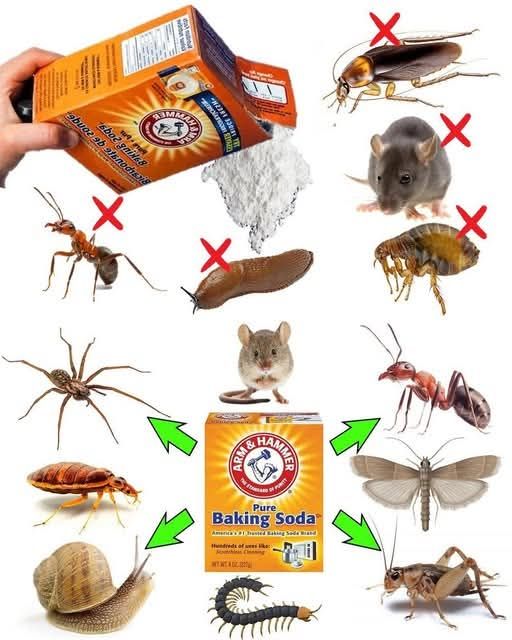ADVERTISEMENT
Supportive Use)
While not a standalone cure, baking soda can help dehydrate bed bugs when applied to affected areas.
How to Use:
- Sprinkle baking soda along mattress seams, under beds, and around cracks.
- Let sit for 24–48 hours.
- Vacuum thoroughly.
- Repeat every few days.
⚠️ Note: Best used alongside professional treatment or diatomaceous earth for serious infestations.
🐁 4. Baking Soda to Deter Mice (When Combined with Other Ingredients)
Mice hate strong smells and unusual food textures. A bait of baking soda and peanut butter can discourage them.
What You’ll Need:
- 1 tablespoon baking soda
- 1 tablespoon flour
- 1 tablespoon peanut butter
How to Use:
- Mix into small balls and place near entry points or behind appliances.
🧠 Warning: Always use caution if pets are in the home. Consider humane traps if dealing with an active mouse infestation.
🌱 Safe, Eco-Friendly, and Budget-Friendly
One of the biggest benefits of using baking soda as a pest control solution is its safety and simplicity:
✅ Non-toxic to humans and pets (when used correctly)
✅ Affordable—costs just pennies per use
✅ Readily available in any grocery store
✅ Environmentally friendly—no chemicals going down the drain or into the air
💡 Bonus Tip: Use It as a Preventive Barrier
Sprinkle baking soda around window sills, door frames, and cracks to create a barrier that pests don’t want to cross. Reapply after vacuuming or rain if used outdoors.
🌟 Final Thoughts
If you’re looking for a natural, inexpensive, and effective way to combat common pests, baking soda might just be your secret weapon. Whether you’re dealing with ants in the kitchen or flies near your fruit bowl, this versatile powder helps you reclaim your space—without harsh chemicals or expensive exterminators.
🧂✨ Simple. Natural. Powerful. That’s the magic of baking soda.
Want a printable cheat sheet for baking soda pest remedies? Let me know—I’d be happy to send one your way!
